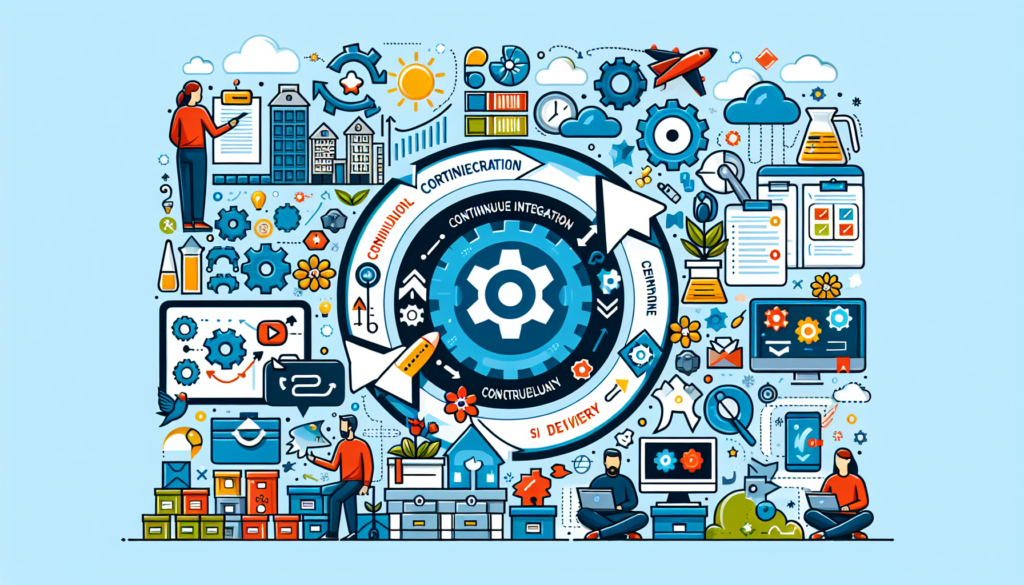In the field of software development, the integration of Continuous Integration (CI) and Continuous Delivery (CD) practices has become a fundamental pillar for projects that follow Agile methodologies. These approaches allow development teams to build, test, and deploy software more efficiently, obtaining rapid feedback and staying aligned with market needs and customer expectations. This article dives into the complex synergy between CI/CD and Agile, breaking down the technical aspects and revealing how the latest practices are redefining value delivery in the software industry.
Continuous Integration: A Deep Technical Perspective
Continuous Integration is a software engineering practice that focuses on the frequent merging of different developers’ codebases in a project. Through automated tools, each change is verified by building and running tests, facilitating early error detection and improving code quality.
Some CI Tools and Their Recent Advances
- Jenkins: An extensible CI system, which provides a wide array of plugins and has evolved to support CD practices, allowing teams to deliver software to production in an automated way.
- GitLab CI/CD: Offers an integrated solution that covers the entire software lifecycle. It incorporates the DevOps philosophy at its core, facilitating pipelines as code and deployment in cloud-native environments.
- Travis CI: A hosted service known for its ease of integration with GitHub. It has gained popularity for its simplicity and for providing developers with instant feedback.
- CircleCI: Provides quick setup and efficient operationalization for CI/CD, noted for its robustness in automation and the speed of its pipelines.
Advanced CI Strategies
- Pipeline as Code: Consists of defining the integration and delivery process through versioned configuration files, improving transparency and maintaining the advantages of version control.
- Optimized Feedback Loops: Seeking faster test execution times to receive immediate feedback, applying parallelization and intelligent splitting of test suites.
- Metrics and Monitoring: Metrics are used to evaluate the effectiveness of CI practices, such as CI cycle time, error rates, and the average time to fix failures.
Continuous Delivery: Raising the CD Standard
Continuous Delivery is the natural extension of Continuous Integration, where the software is not only integrated but also continuously brought to a “deployable” state. CD allows teams to perform automatic or manual deployments at any time, ensuring that the code is always ready to be released.
Recent Advances in CD Tools
- Spinnaker: An open-source solution that stands out for its ability to manage complex deployments at scale and its integration with IaaS and PaaS tools.
- Octopus Deploy: Provides a unified view of the deployment process and compatibility with multiple environments and platforms, focused on deployment security and reliability.
- GoCD: Notable for its CD-oriented pipeline model and flexibility in configuration, adapting to various deployment patterns.
Advanced CD Strategies
- Container-Based Deployment: Using container technologies such as Docker and Kubernetes to ensure the deployment of applications in isolated and scalable environments.
- Feature Flags: Allows teams to control the visibility of new features and functionalities, which can be activated or deactivated in production without the need for additional deployments.
- Dark Launches and A/B Testing: These techniques enable the delivery of different versions of the application to specific user segments to test functionalities and gather data before the official launch.
CI/CD in the Agile Context
Agile methodologies advocate for incremental delivery and adaptability. By incorporating CI/CD into Agile projects, software progress visibility is improved, and a continuous improvement mindset is promoted. This is evident in the ability to respond to changes with speed and efficiency without sacrificing the stability or quality of the final product.
Successful Case Studies
Tech pioneer companies like Netflix and Amazon have used CI/CD to automate and refine their deployment processes, allowing them to perform hundreds of deployments per day. This illustrates how integrating these practices within an Agile framework can translate into a significant competitive advantage.
Future Projections and Potential Innovations
The evolution of CI/CD is closely linked with the advancement of cloud technology, Artificial Intelligence, and Machine Learning. An increase in decision-making automation and greater customization of delivery experiences are anticipated. Moreover, with the emergence of infrastructure as code, the path is being paved towards even more sophisticated automation and more granular control.
Conclusion
The integration of CI/CD into Agile projects makes a significant difference in how software is built and delivered. Through this fusion, teams can not only increase efficiency and quality but also deliver continuous value to end-users. The constant evolution of technologies and practices promises a future in which CI/CD will continue to reinvent itself and establish itself as a transformative force in software development. The current innovations lead us to a horizon where the boundary between software development and operation becomes increasingly blurred, underscoring the importance of adopting a comprehensive vision for the delivery of technological products.

